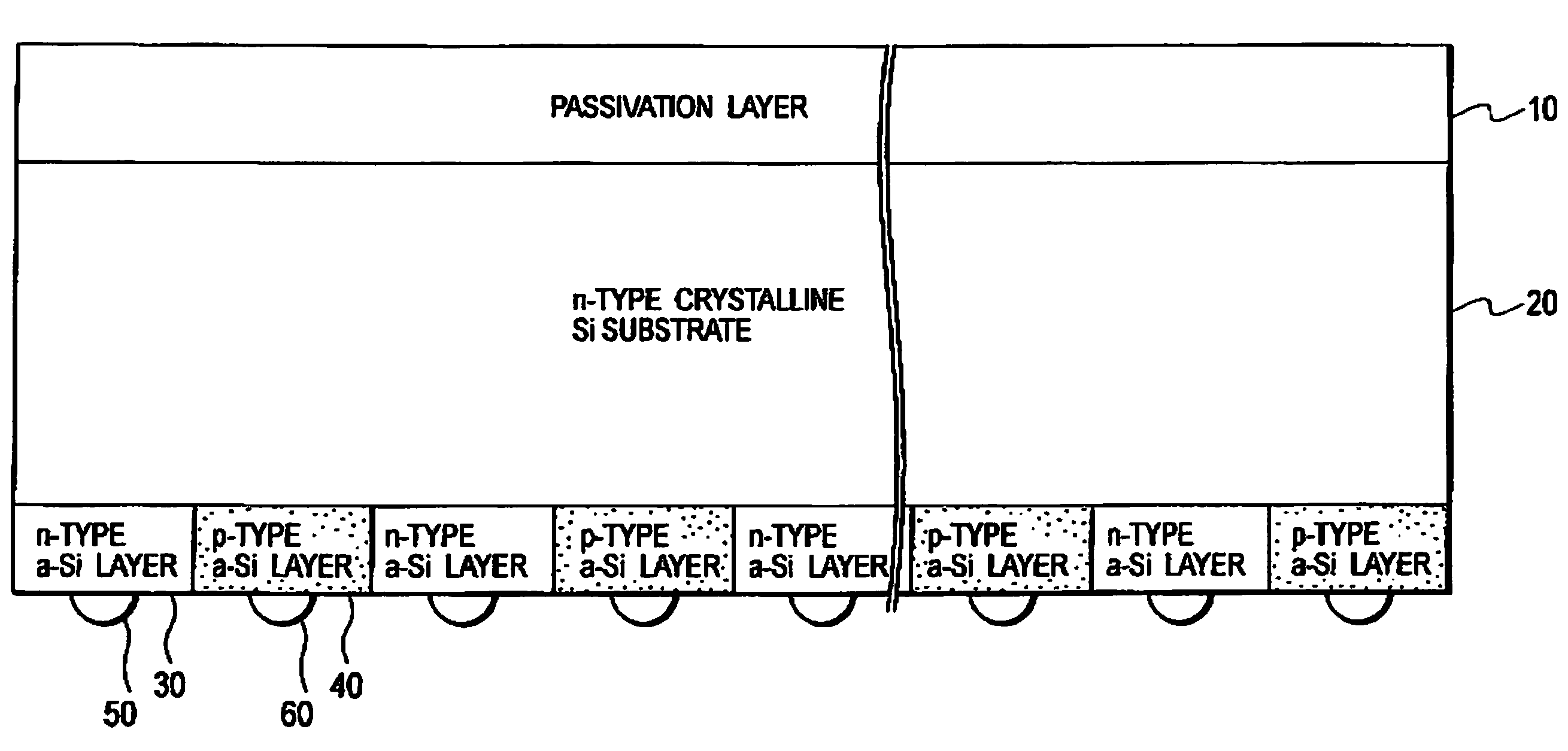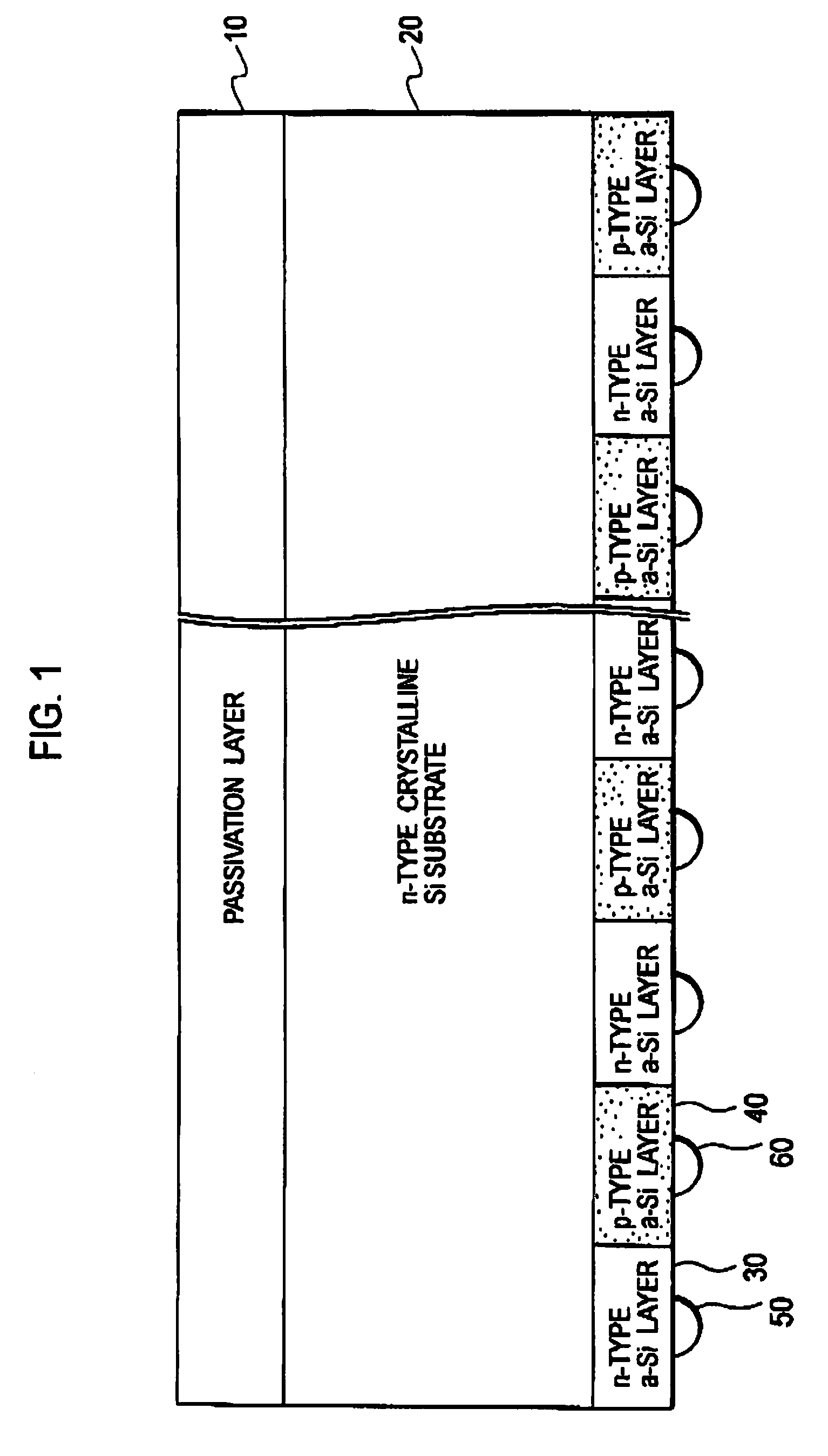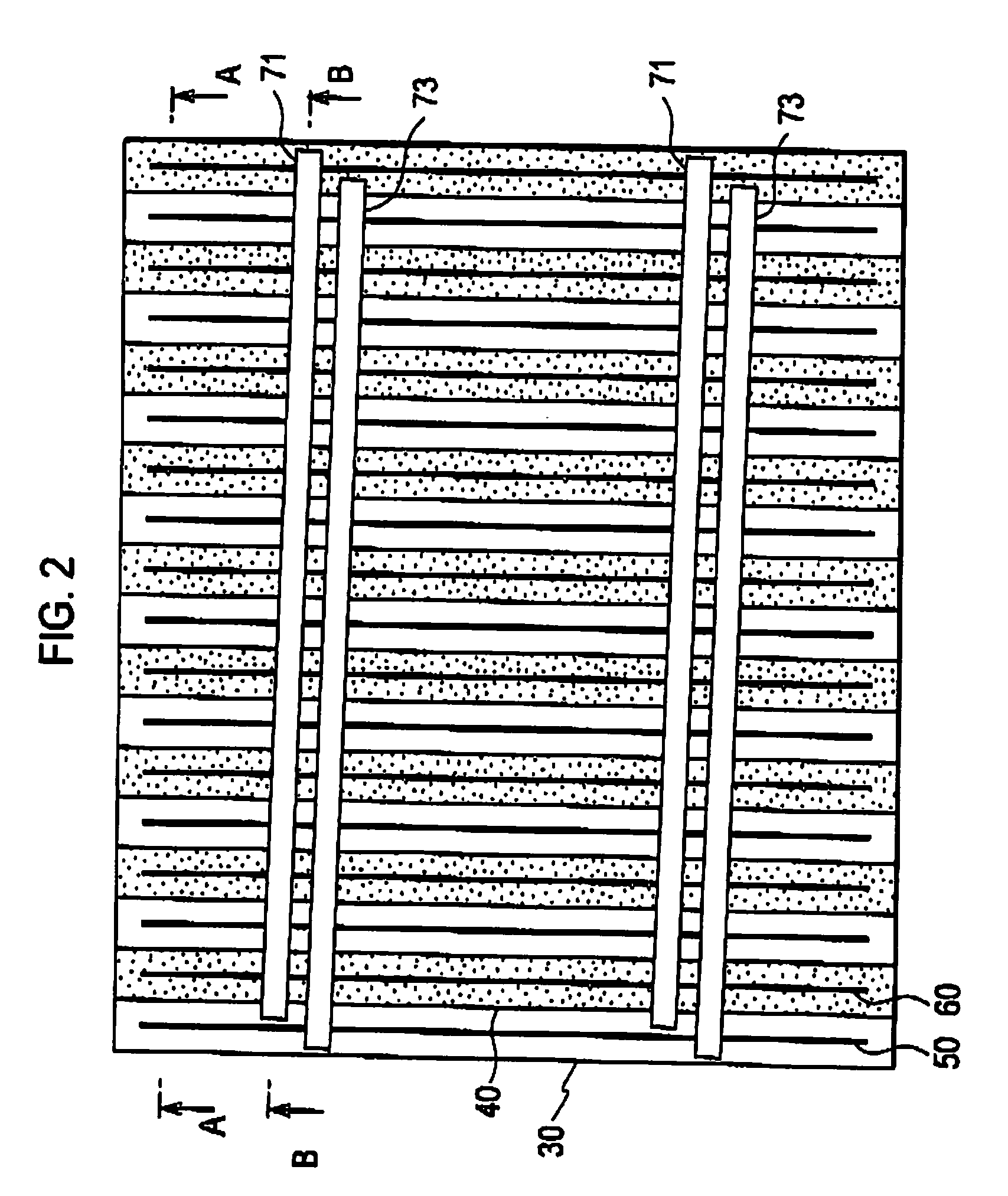Solar cell and solar cell module including the same
a solar cell and module technology, applied in the field of solar cells, can solve the problems of reducing the position accuracy of the wiring, damage to the solar cell, and restrictions in the shape and arrangement of the n electrodes, so as to improve the conversion efficiency and the degree of freedom of design
- Summary
- Abstract
- Description
- Claims
- Application Information
AI Technical Summary
Benefits of technology
Problems solved by technology
Method used
Image
Examples
first embodiment
Configuration of Solar Cell
[0034]Hereinafter, the configuration of a solar cell according to a first embodiment of the present invention will be described with reference to the drawings. FIG. 1 is a diagram showing a cross section of a solar cell 100 according to the first embodiment of the present invention. Note that FIG. 1 is a sectional view in which the solar cell 100 is viewed from a direction A shown in FIG. 2 to be described later.
[0035]As shown in FIG. 1, the solar cell 100 includes a passivation layer 10, an n-type crystalline Si substrate 20, an n-type a-Si layer 30, a p-type a-Si layer 40, an n finger electrode 60 and a p finger electrode 60.
[0036]The passivation layer 10 is an amorphous Si layer and configured to have a function of protecting the solar cell 100. Incidentally, the n-type a-Si layer 30 and the p-type a-Si layer 40 may be configured of the crystalline Si same as the n-type crystalline Si substrate 20. Additionally, the amorphous Si layer may be a single la...
second embodiment
[0067]Hereinafter, a second embodiment of the present invention will be described with reference to the drawings. In addition, the difference between the first embodiment described above and the second embodiment will be mainly described.
[0068]More specifically, although the n finger electrode and the p finger electrode are provided on the back surface of the solar cell 100 in the first embodiment described above, the p finger electrode is provided on the front surface of the solar cell 100, and the p bus bar is provided on the back surface of the solar cell 100, in the second embodiment.
(Configuration of Solar Cell)
[0069]Hereinafter, the configuration of a solar cell according to the second embodiment of the present invention will be described with reference to the drawings. FIG. 6 is a diagram showing a cross section of a solar cell 100 according to the second embodiment of the present invention. Note that, FIG. 6(a) is a sectional view in which the solar cell 100 is viewed from a...
third embodiment
[0088]Hereinafter, a third embodiment of the present invention will be described with reference to the drawings. Note that, the difference between the first embodiment described above and the third embodiment will be mainly described below.
[0089]More specifically, although the p-type a-Si layer is provided on the back surface side of the solar cell 100 in the first embodiment as described above, the p-type a-Si layer is provided on the front surface side of the solar cell 100 and the p finger electrode and the p bus bar are provided on the back surface side of the solar cell 100, in the third embodiment.
(Configuration of Solar Cell)
[0090]Hereinafter, the configuration of a solar cell according to the third embodiment of the present invention will be described with reference to the drawings. FIG. 8 is a diagram showing a cross section of a solar cell 100 according to the third embodiment of the present invention. Note that, FIG. 8(a) is a sectional view in which the solar cell 100 is...
PUM
 Login to View More
Login to View More Abstract
Description
Claims
Application Information
 Login to View More
Login to View More - R&D
- Intellectual Property
- Life Sciences
- Materials
- Tech Scout
- Unparalleled Data Quality
- Higher Quality Content
- 60% Fewer Hallucinations
Browse by: Latest US Patents, China's latest patents, Technical Efficacy Thesaurus, Application Domain, Technology Topic, Popular Technical Reports.
© 2025 PatSnap. All rights reserved.Legal|Privacy policy|Modern Slavery Act Transparency Statement|Sitemap|About US| Contact US: help@patsnap.com



